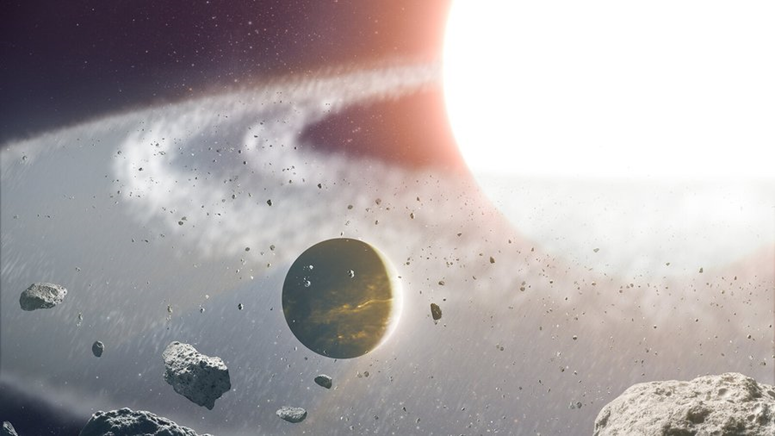A planet miraculously survives the explosion of its star... and raises scientific bewilderment

An expressive image issued by "NASA" of a planet among the "hot Jupiters" orbiting near its star
A number of scientists spotted a Jupiter-like planet located 520 light-years from Earth, and they said that it "didn't make sense for it to exist", as it survived surprisingly and uncharacteristically after its host star was subjected to inflation and explosion.
According to the American "CNN" network, the planet was called "Hala Halla", and it orbits the planet outside the solar system around a giant star larger than our sun called Paikdu, and is located in a constellation (a group of stars) called Ursa Minor or the "Little Bear".

Halla orbits Baekdu at a distance of about half the distance between Earth and the sun.
Scientists used NASA's Transiting Exoplanet Survey Satellite (TESS), which studies nearby stars, to monitor Paekdu.
The team's observations revealed that the star once burned through the helium in its core. They expected it to expand and swell as a result to turn into a red giant star.
A star is called a "red giant" when it swells and burns through the elements in its heart before exploding and swallowing what is around it, including planets near its orbit.

But despite this, "Hala" was able to survive and not be destroyed, which puzzled the authors of the study, which was published yesterday (Wednesday) in the journal "Nature".
"We were surprised that (HALA) was able to survive in the immediate vicinity of its giant star," study co-author Dr Dan Hooper, a professor at the Australian Research Council at the University of Sydney, said in a statement. We are now studying how he could have avoided this violent event.”
Hooper and his team pointed out that our sun is expected to reach the end of its lifespan within 5 billion years, when it expands to 100 times its current size and is likely to engulf and obliterate Earth and other planets in the solar system. They pointed out that the discovery of this Jupiter-like planet, and research into the possibility of its survival in these conditions, could protect our planet from such a disaster.
Scientists classified Halla among the "hot Jupiters", a classification of exoplanets similar in size to Jupiter that have higher temperatures given how close they are to their host stars.
Source: websites

